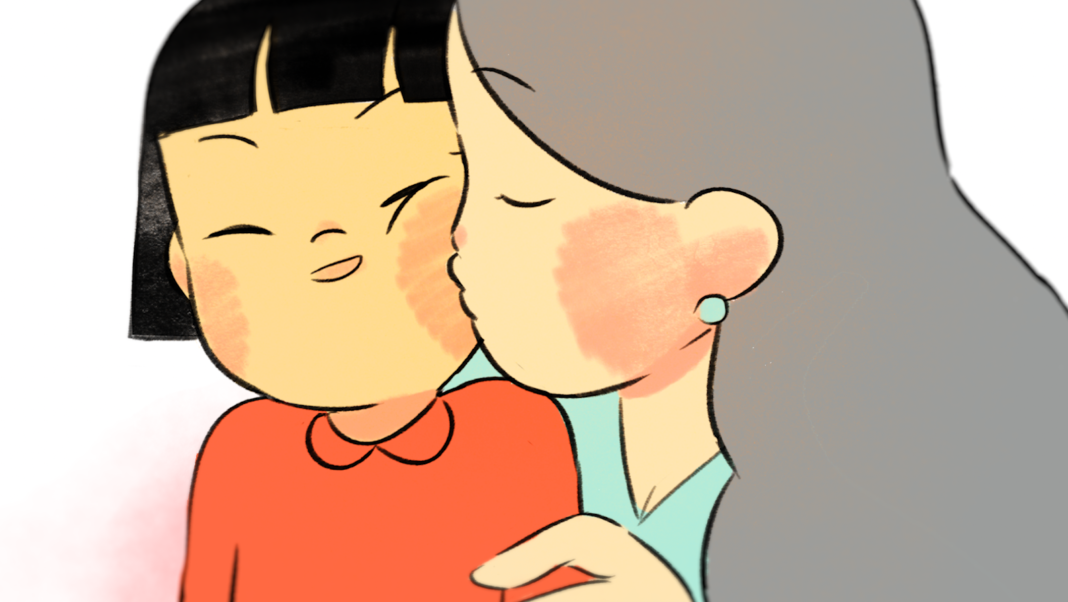Film-maker Mulan Fu uses the power of animation to show a heart-breaking relationship between a woman and her daughter in the short animation BEAUTIFUL.
Film And TV Now spoke with the film-maker about her work and the influences that have shaped her development as an artist.
FILM AND TV NOW: The film is a visual representation of the effects of a disease like cancer. What was the start-off point for the short?
MULAN FU: This film was inspired by my experiences of witnessing and accompanying families and friends who fought through breast cancer.
It’s such a widespread disease that impacted so many families’ and women’s lives, but it was difficult to find representations of it in media that convey both the physical transformation and the emotional journey it brings about.
How much this disease impacts women’s self-perception and their sense of beauty is intense and delicate, and I want to create something that celebrates the universal beauty of the female body and the strength and resilience that women have.
FTVN: You use a mix of fantasy and grounded reality throughout the animation to represent both the real and imagined world of the teenage girl. What were your literal influences when conceiving the film?
MF: This method of expression was mainly inspired by my personal perspectives triggered when I was in the hospital wards observing the patients and their families.
A lot of the patients were middle-aged women, and their daughters, who were my age, all came to stay and take care of their mothers. It was such a touching and bittersweet display of mother-daughter relationships and their mutual love. The daughters took care of the mothers like how they were taken care of when they were young.
Those moments left me such a powerful impression and sparked so many of my memories with my mom as well. The charming parallel of actions between the mothers and daughters in the hospital wards inspired this method of expression that blends reality and dream-like fantasy in my film.
FTVN: The film harks back to some of the work that the National Film Board of Canada did in their animation offerings from decades ago. Which animators do you look up to and are inspired by?
MF: The animations from the National Film Board of Canada were such a major inspiration during my college years and sparked so many stylistic explorations and experimentations.
Norman McLaren was undoubtedly a major inspiration opening the doors to independent and experimental animations for me and his play with the music track also led me to many audio experiments and to view the soundscape as another layer of storytelling for my films.
FTVN: How long did it take to shoot?
MF: This short film was completely created during the quarantine months and took 7 months to finish. It was quite a soothing and meditative experience animating this at home, especially when I was half a planet away from my family and unable to visit them.
FTVN: How did you raise finance for the short?
MF: It was an independently created short film and had a very low budget, and I was grateful to have received the grant fund from the Richard Protovin Animation Award at NYU to help get my film to the finish line.
FTVN: We understand you want to promote the Chinese cultural identity through your work. Where do you feel you can strengthen this bond between the East and the West?
MF: The societies in both the East and the West are changing rapidly, and there are so many cultural and social elements lost in translation.
The more I travel between the countries, the more I notice that there are many out-dated and misguided impressions of the other sides. I always viewed the entertainment industry as a powerful platform of cultural communication, and I think that if culturally genuine, authentic and artistically sound pieces are available, it will eventually reach the audiences around the world.
Meanwhile, it’s also important to maintain the openness and curiosity to learn about other cultures.
FTVN: We also understand that Chinese mythology forms a major part of your process. How does it differ from the likes of Greek, for example, and what are the common themes and issues that are in sync with what Western audiences and scholars gravitate towards?
MF: To me, the uniqueness of Chinese mythology lies in its nuanced geographical and cultural diversity.
Different folklores and tales form different mythological ambience and history in each area of China, and they all merge and blend throughout the centuries to create an immense and complex universe of mythological figures, creatures, worlds, and stories.
As seen in the new wave of Chinese animated features, the amount of fascinating stories to re-imagine in Chinese mythology is excitingly substantial and I’m one of the many Chinese artists and creators who are captivated by this cultural heritage.
FTVN: Diversity and gender are major issues at the moment in the creative arts. What are your ambitions and hopes for the future?
MF: I have always dreamed about creating a film and animation studio that celebrates the female perspective, both artistically and socially.
I hope to continue highlighting the female experiences that were scarcely or statically represented, and tell emotionally appealing stories that connect to an international audience.
FTVN: You grew up in Asia, but moved abroad to study. What are the big changes in your life that have been affected by your actions in this journey of your life.
MF: I’m beyond grateful for my parents who took me travelling around the world during my childhood.
Their philosophy of learning by travel brought me so much eye-opening experiences and inspirations, particularly the ability to alternate perspectives between societies and cultures, and view the world differently from others‘ eyes.
I think the biggest impact that living in different countries and societies brought me was the constantly humbling experiences that kept reminding me how much more there is to learn and how big the world could be.
FTVN: How has the global situation affected your development and evolution as a film-maker?
MF: I think the world today pushes me harder than ever to maintain my goals to bridge the cultural gaps and tell emotional and uplifting stories that appeal to a worldwide audience.
FTVN: Finally, what are you most proud of about this short film?
MF: The moment that I felt very proud was when I showed this film to my families and friends who have been impacted by this disease and they were deeply touched. Understanding that my film genuinely captures and conveys their experiences and emotional journeys was the most satisfying and heart-warming outcome.































